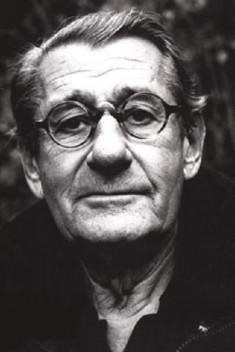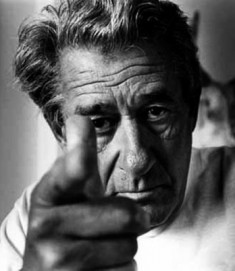| Helmut Newton | |
|---|---|
 |
|
| Photographer | |
| Born | Oct. 31, 1920 Berlin, Germany |
| Died | Jan. 23, 2004 (at age 83) West Hollywood, California, US |
| Nationality | German-Australian |
Helmut Newton was a very influential fashion photographer during the mid and latter part of the 20th century. Although he was known for creating a wide array of photo art, his erotic, black-and-white photos would become stylistic mainstays in magazines such Vogue and others.
Early Years
Helmut Newton was born on October 31, 1920. His birth name was Helmut Neustädter and he was born in Berlin, Germany, although he later immigrated to Australia. As a young man, he attended the Heinrich-von-Treitschke-Realgymnasium, but his real education in life came at the age of 11 when he bought his first camera. Newton became enthralled with photography and opted to study it formally with the famous photographer, Elsie Neulander Simon, at the age of 16.
When the Nazis took power in Germany, Newton and his family were persecuted for being Jewish. His father owned a button factory that was, essentially, confiscated by the state. The family was even taken to a concentration camp for some time.
Eventually, they were released and fled to South America and then to Singapore. In Singapore, British officials relocated Newton to Australia and this became his home for many years. His arrival was not a positive one since he was interned by British authorities and forced into manual labor.
Reentering the World of Photography
By 1946, Newton had changed his name, become a British subject, completed military service and married a popular actress. After having worked as a truck driver for some time, he opened up his own photography studio in Melbourne. The primary focus of his work was on fashion and theatre photography.
In the years after World War II, there was a boom in affluence so many had the discretionary funds to purchase artwork. Helmut Newton was able to meet this demand with his interesting photo art.
Making a Name for Himself
 In 1953, he teamed with a colleague and fellow immigrant named Wolfgang Sievers to present an exhibition entitled New Visions in Photography. This exhibition was quite innovative and offered a glimpse of New Objectivity art, a movement designed to capture the culture and life of Wiemar Germany.
In 1953, he teamed with a colleague and fellow immigrant named Wolfgang Sievers to present an exhibition entitled New Visions in Photography. This exhibition was quite innovative and offered a glimpse of New Objectivity art, a movement designed to capture the culture and life of Wiemar Germany.
The exhibition helped boost Newton’s profile immensely and he became a very highly regarded photo artist. A result of this would be a commission to perform fashion shoots for an Australian wing of Vogue magazine. So impressed were the editors of Vogue with his work that Newton landed a job with the London office of the magazine.
The Established Auteur
In 1961, Newton traveled to Paris, a city many artists would call their home. In Paris, he created photo layouts and art for a number of highly regarded magazines such as Harper’s Bazaar. His newer artwork was considered highly erotic and controversial, often centering on fetish-oriented themes. He did gain quite a bit of acclaim for his new work.
Newton’s Later Years
Newton suffered a heart attack in 1970 and this slowed his output of work down tremendously, but he made a surprising recovery and continued to be a prolific photographer for the next 30 years. However, in January of 2004, he was involved in a fatal auto accident that took his life.